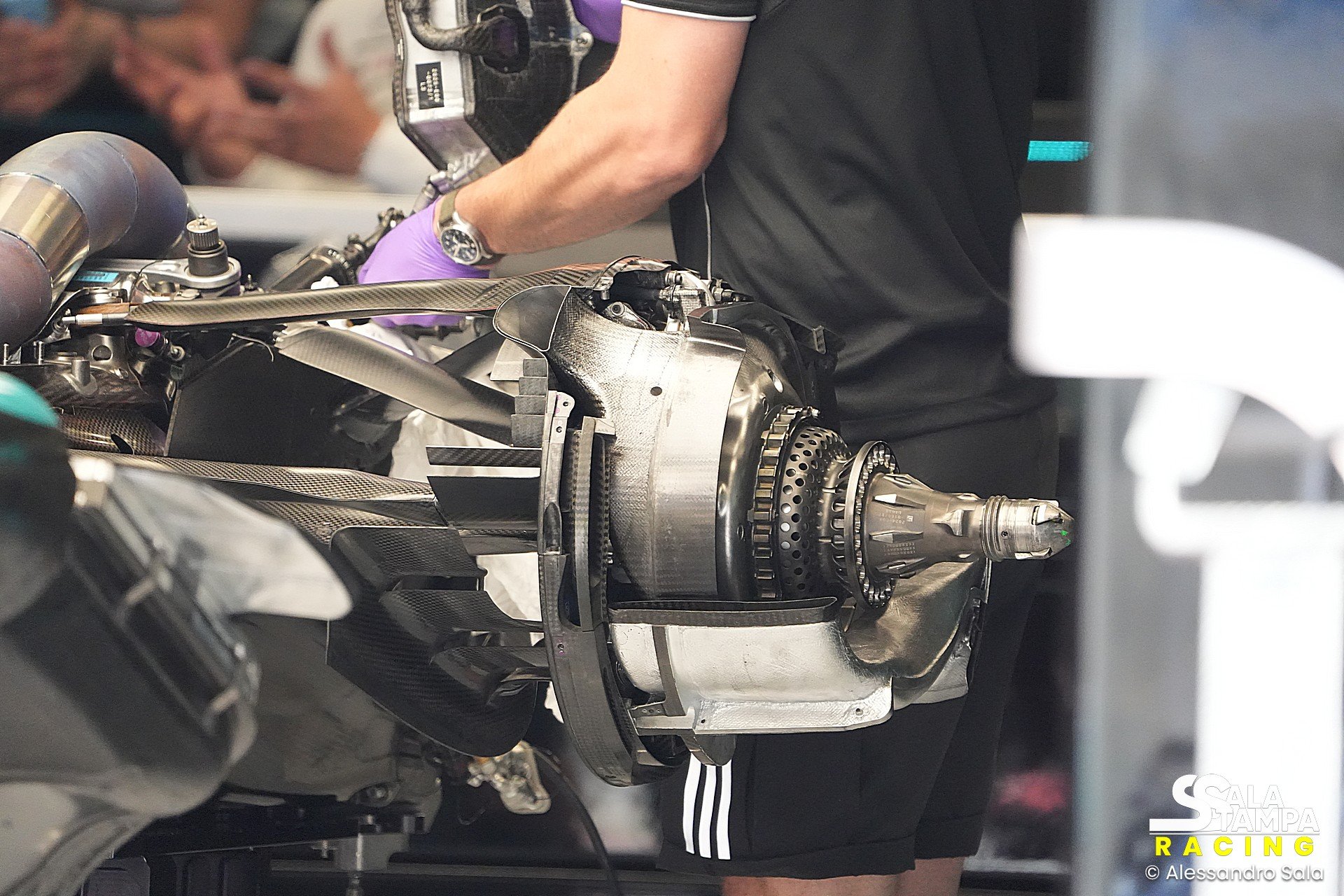The bump may just be there because a sensor is underneath, or simply a latch that fastens the cover.
The paper filter looking segments look like they just allow windage to diffuse outward from the rotating disc rotor.
If it were a closed cover, there would be windage losses, and possible brake dust build up from the pads, which could cause brake fire.
The part of the pictures that catches my eye is where the wheel rim sits on the hub. There is a carbon looking surface, and behind that a slotted cylinder, which as i mentioned before one of the ducts is blowing air on where the disc rotor is splined to the wheel hub. The slots reduce the surface area of the structure connecting the rim and the rotor, to reduce heat transfer, and they also provide a pathway for cooling air to blow through the hub, wheel and rotor interface, keeping things cool.
This design is probably perfected by analyzing wheel speed (how fast the rotor is spinning) and air mass flow coming in at that ground speed and sizing the surface areas accordingly.
Red bull has very good tyre management in Imola, so they themselves know there is no thermal magic going on for McLaren. No fancy phase change or liquid transfer devices. Just plain old special focus and R&D.
I am also not discounting the size of the rear rotor being oversized, that runs cooler and has more stable temperature change than a comparatively smaller brake rotor.





